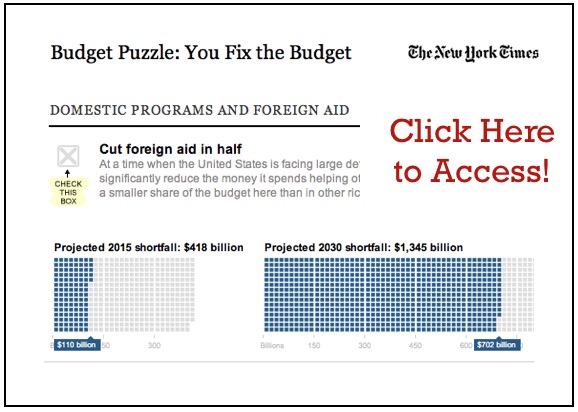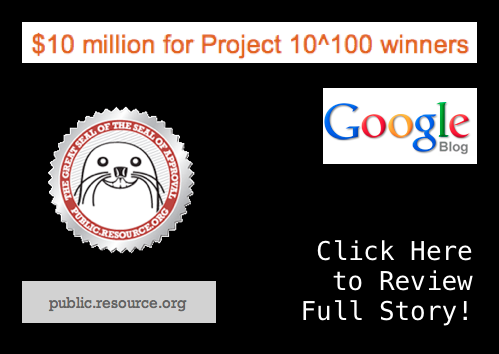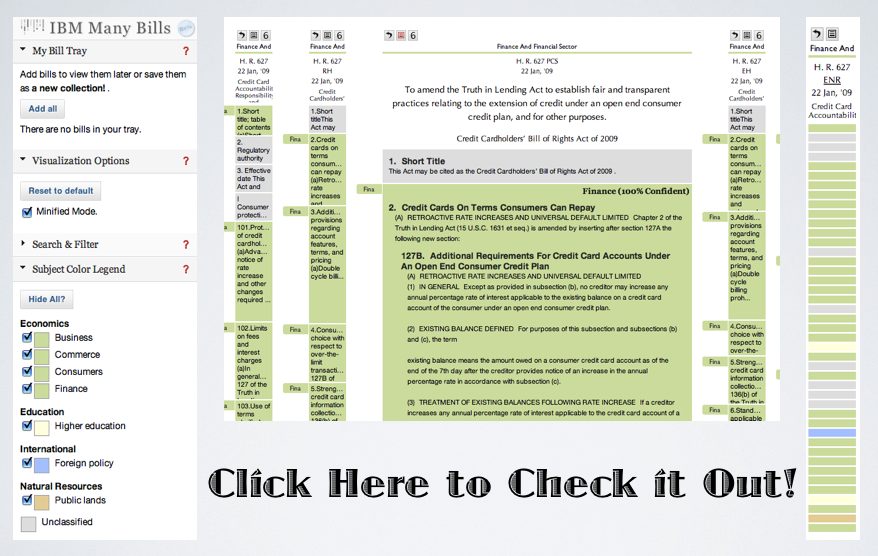While some of these cost and revenue projections could be debated, the New York Times has developed a nifty interface that allows end users to consider how they would attack the problem of deficit reduction. Using the New York Times Budget puzzle, here is my approach. In developing my approach, I tried to consider a configuration that I thought could actually attract majority support in a time of divided government. Thus, I leaned pretty hard on spending cuts (70%) with relatively fewer tax increases (30%). Obviously, your are free to disagree but I would suggest that try it for yourself and see where you come out.
Tag: Google for Government
Bloomberg Government – Another Tool for Navigating the Increasingly Complex Information Environment?
While I am hardly here to shill for Bloomberg, the introduction of Bloomberg Government into the market for government information does represent an important development worthy of highlighting. Coverage from a few weeks back is located here and here.
While I hope to explore the actual product in the coming months, the front page highlights both its coverage and its informational interface. Whether aimed at sophisticated and non sophisticated actors, the selection of this sort of dashboard style interface is important as it is precisely the sort of HCI that has been shown to help end users navigate complex information environments.
The ever increasing access to digitized governmental information provides a real arbitrage opportunity for a specific firm to serve as the default third party provider of that information. Whether Bloomberg Government will fill this void is likely a function of (1) the novelity of its informational inputs and (2) the quality of the HCI experienced by target end users. Only time will tell…
Public Resource.org / Law.gov Win 10^100 Google Project Funding
Congratulations to Carl Malamud and publicresource.org for being selected as a Google 10^100 project winner! Among other things, the $2 million grant “will support the Law.Gov initiative, which aims to make all primary legal materials in the United States available to all.” I had the pleasure of presenting at the UC-Boulder Law.gov meeting and Texas Law.gov meeting earlier this year. Thus, I am very excited about Google’s decision to fund this very worthy project. For those who are interested in reading more, O’Reilly Radar has additional information on the law.gov / google 10^100 announcement here.
Julian Assange: Why the World Needs WikiLeaks [ TED 2010 ]
Love it or hate it … WikiLeaks has been in the news quite a bit lately. In this TED talk, Founder Julian Assange sits down with Chris Anderson to discuss WikiLeaks. From the talk description … “The controversial website WikiLeaks collects and posts highly classified documents and video. Founder Julian Assange, who’s reportedly being sought for questioning by US authorities, talks to TED’s Chris Anderson about how the site operates, what it has accomplished — and what drives him. The interview includes graphic footage of a recent US airstrike in Baghdad.”
Estimating U.S. Government Subsidies to Energy Sources (02-08) [From Environmental Law Institute]
Click above to access visual and for the Full Report entitled Estimating U.S. Government Subsidies to Energy Sources: 2002-2008 click here! [HT: Barry Ritholtz @ The Big Picture]
Computational Legal Studies Presentation Slides from the Law.gov Meetings
Thanks to Carl Malamud and the good folks at the University of Colorado Law School and University of Texas Law School for allowing us to participate in their respective law.gov meetings. For those interested in governmental transparency, we believe that Carl Malamud’s on-going national conversation is very important. The video above represents a fixed spaced movie combining the majority of the slides we presented at the two meetings. If the video will not load, click here to access the YouTube Version of the Slides. Enjoy!
Law.Gov Meeting @ Texas Law School
Tommorow is the Law.gov meeting at Texas Law School where Mike and I will be presenting in the afternoon session. We are looking forward to the discussion! Thanks to Terry Martin and Carl Malamud for organizing the event. For those interested, click on the image above and you will be directed to the agenda for the meeting.
Law.Gov Meeting @ Colorado Law School
Tomorow is the Law.gov meeting at Colorado Law School. I am looking forward to it. Thanks to Paul Ohm and Carl Malamud for organizing the event. I know that we will have a very meaningful discussion! For those interested, click on the image above and you will be directed to the agenda for the meeting.
United States Supreme Court’s New Website — Still Far Below the Mark
The United States Supreme Court has recently launched its newly redesigned website. Given the significant limitations associated with the prior website, this launch had been highly anticipated. Indeed, many had hoped for a website that would reflect well upon the Court. While we applaud the decision to move away from the prior design, a review of the Court’s new website reveals a product which still falls far below the mark.
One of the very disappointing aspects of the new interface is that it appears to have been created with little regard for the overtures offered by folks such as the Sunlight Foundation. Specifically, in an effort to improve the experience of end users, the Sunlight Foundation offered a very constructive mockup redesign for the website. Unfortunately, the current redesign does not reflect most of their ideas.
For those interested in additional thoughts on this matter, the good folks over at Law Librarian Blog offer a number of constructive suggestions for improvements. These include unlocking PDF documents by simultaneously making their content available in friendly formats such as XML / HTML. Anyway, we hope that this is merely one step in the direction of genuine improvement …. but given the current state of affairs … the path to a 21st century website for the United States Supreme Court looks to be quite long.
160,000 Hours of C-Span Coverage at Your Finger Tips
As reported in the NY Times … roughly 160,000 hours of C-SPAN coverage is going live for your consumption. Yet another example that the Era of Big Data is upon us!













